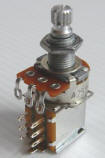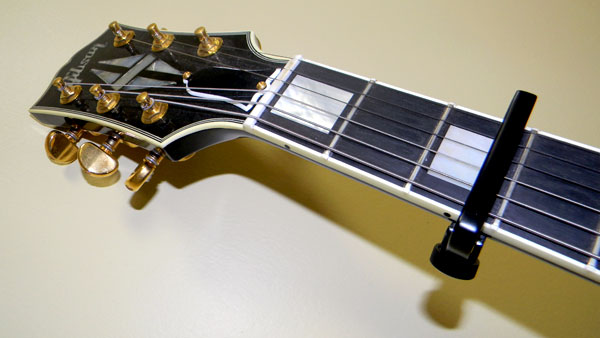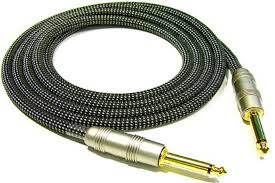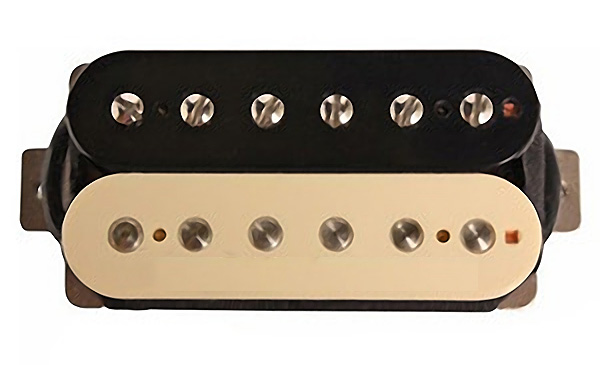SERIES: Two or more pickup coils wired so that the output of one coil feeds into the input of another coil. The result of this is a loss of treble and an increase of output. Example: a humbucking pickup is 2 coils in series.
PARALLEL: Two or more pickup coils wired so that each coils’ input has its own feed from the amplifier. The result is a tone somewhere between the tone of each coil individually with a slight decrease in output. Example: 1) a Strat with the 5 way switch in positions 2 and 4. 2) a Les Paul with with the toggle switch in the middle position.

DPDT: Double-pole double-throw. This is a 2-way switch that has 2 separate switches in one. Each of 2 contacts in the switch can be routed differently depending on the switch’s position. Example: 1) a mini-toggle switch 2) a push / pull control.
PUSH/PULL: A Double-pole double-throw switch mounted on a potentiometer (volume control, tone control…). This switch is activated by pulling up or pushing down on a guitar’s volume or tone knob. This is useful for adding a switch without drilling additional holes in your guitar.
5 WAY: A standard Strat switch. The majority of my diagrams use a switch with 2 sets of contacts (like having 2 switches in one). Some less expensive guitars have only one set of contacts. It is suggested replacing these switches immediately; they can be unreliable and do not provide the awesome switching potential of the standard 5 way switch.

3 WAY: A standard large toggle (Gibson, Guild, Gretch, etc…). This switch is usually used for simple pickup switching, although it can also be used effectively in a more versatile wiring scheme.
“COMMON” TERMINAL: The terminal(s) on a switch that, when the switch is changed to different positions, makes contact with different terminals.

GROUND: Sometimes referred to as earth. An electrical ground is a common point in the guitar wiring that allows a signal or current to return to a common point. A good analogy is “You can think of a ground as a “sink” that electrical noise runs down”. Poor grounding in a guitar will cause the guitar to hum or buzz.


